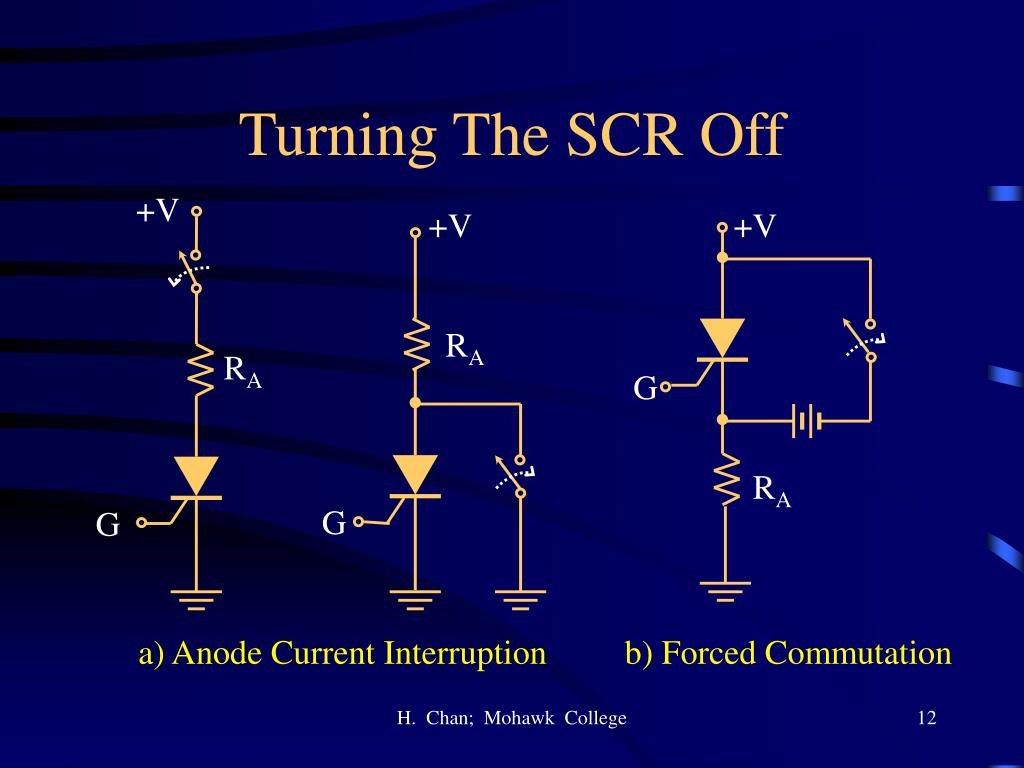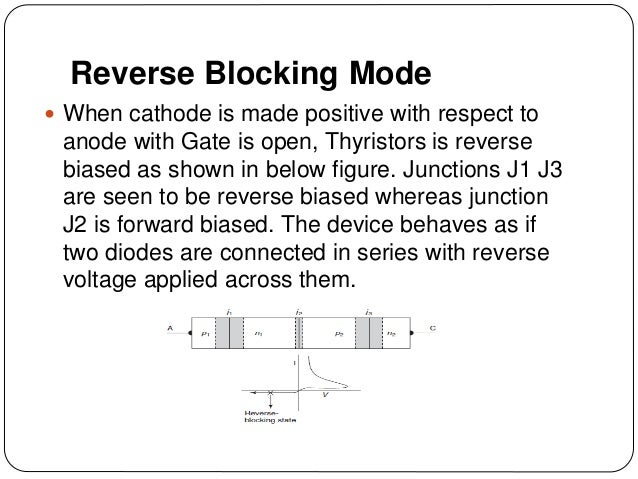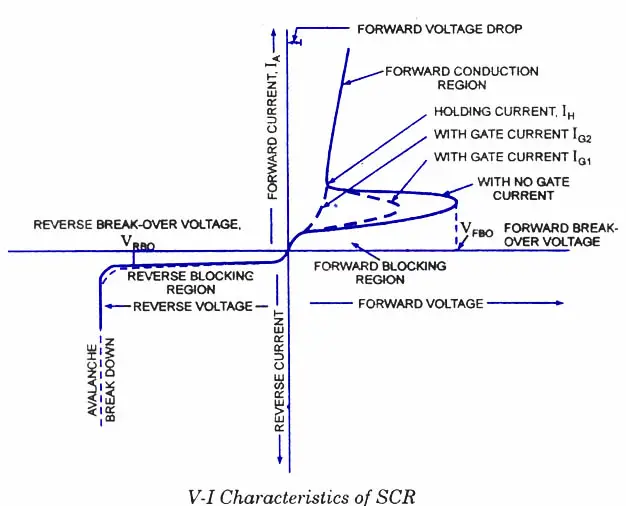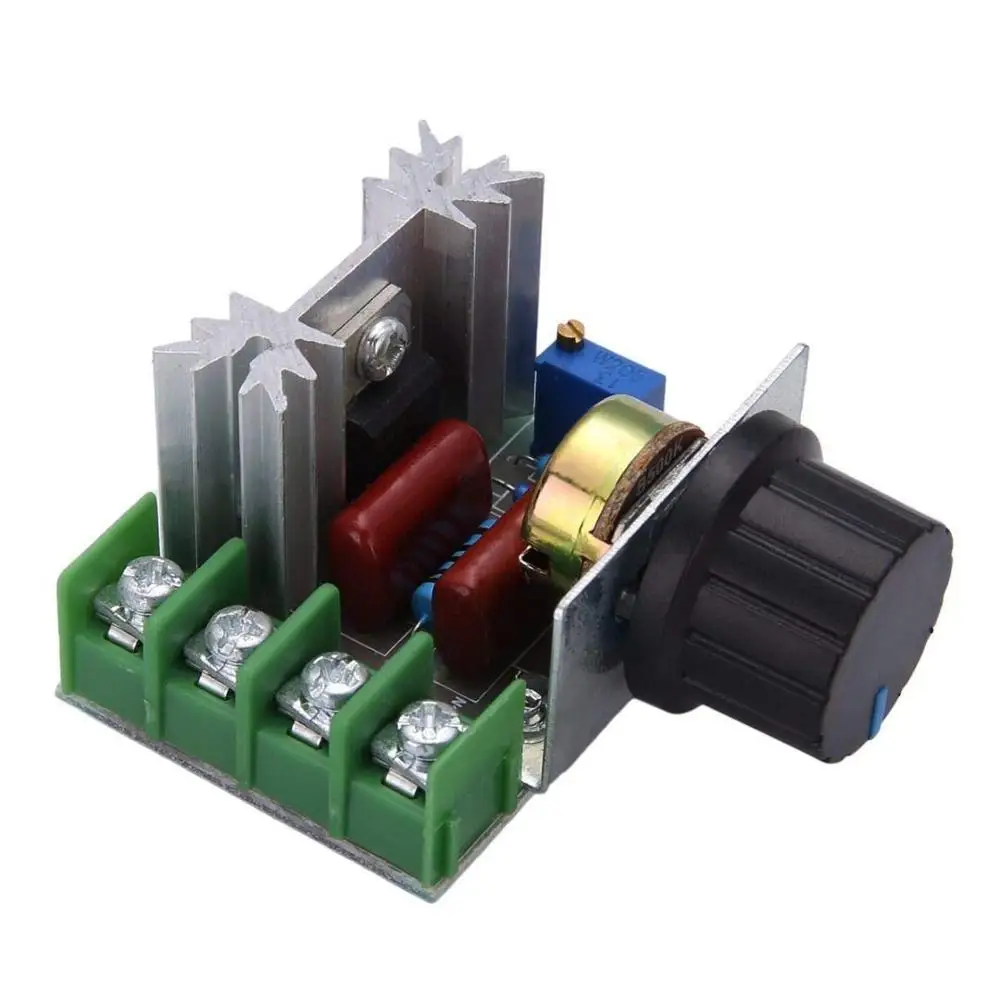Silicon Control Rectifier Presentation
| Introduction to Silicon Control Rectifier (SCR) | ||
|---|---|---|
| The Silicon Control Rectifier, also known as SCR, is a four-layer, three-terminal semiconductor device used for controlling the flow of electric current. It is widely used in various applications such as power supplies, motor controls, lighting dimmers, and voltage regulators. SCR is a type of thyristor, which is a family of semiconductor devices used for high-power switching and control. | ||
| 1 | ||
| Basic Structure and Operation of SCR | ||
|---|---|---|
| SCR consists of three terminals: Anode (A), Cathode (K), and Gate (G). It has four layers of alternating P and N-type semiconductors, forming three P-N junctions. SCR operates in three states: forward blocking, forward conduction, and reverse blocking. | ||
| 2 | ||
| Forward Blocking State of SCR | ||
|---|---|---|
| In the forward blocking state, the anode is positive with respect to the cathode, but no current flows through the SCR. The P1-N1 junction and P2-N2 junction are reverse-biased, preventing the flow of current. SCR remains in this state until a triggering signal is applied to the gate terminal. | ||
| 3 | ||
| Forward Conduction State of SCR | ||
|---|---|---|
| When a positive trigger signal is applied to the gate terminal, the SCR enters the forward conduction state. The P1-N1 junction and P2-N2 junction become forward-biased, allowing the current to flow through the SCR. Once triggered, SCR remains in the conduction state even if the gate signal is removed until the current drops below a certain level. | ||
| 4 | ||
| Reverse Blocking State of SCR | ||
|---|---|---|
| In the reverse blocking state, the anode is negative with respect to the cathode, and no current flows through the SCR. The P3-N1 junction and P2-N2 junction are reverse-biased, preventing the flow of current. SCR can withstand a reverse voltage up to its specified blocking voltage. | ||
| 5 | ||
| Characteristics and Advantages of SCR | ||
|---|---|---|
| SCR has a high current and voltage handling capability, making it suitable for high-power applications. It exhibits high switching speed, low forward voltage drop, and excellent thermal stability. The latching characteristic of SCR allows it to remain conducting even after the gate signal is removed, providing self-sustained conduction. | ||
| 6 | ||
| Applications of SCR | ||
|---|---|---|
| SCR is commonly used in AC power control, such as in motor speed control, light dimming, and heating element control. It is utilized in voltage regulators, battery chargers, and uninterruptible power supplies (UPS). SCR also finds applications in welding equipment, electroplating, and power factor correction circuits. | ||
| 7 | ||
| Protection and Cooling of SCR | ||
|---|---|---|
| SCR requires proper protection against overvoltage, overcurrent, and excessive temperature. Protective devices like fuses, surge suppressors, and snubber circuits are used to safeguard SCR from voltage spikes and transients. Cooling techniques such as heat sinks, fans, and liquid cooling are employed to maintain the SCR's temperature within acceptable limits. | ||
| 8 | ||
| Advancements in SCR Technology | ||
|---|---|---|
| Advancements in SCR technology have led to the development of newer variants with improved performance and features. Gate turn-off thyristor (GTO), enhanced gate-commutated thyristor (EGCT), and integrated gate-commutated thyristor (IGCT) are some of the advanced SCR devices. These newer versions offer better controllability, higher switching frequencies, and reduced switching losses. | ||
| 9 | ||
| Conclusion | ||
|---|---|---|
| Silicon Control Rectifier (SCR) is a versatile semiconductor device used for high-power switching and control applications. Its ability to handle high currents, voltage blocking capability, and robustness make it a preferred choice in various industries. With ongoing advancements, SCR technology continues to evolve, offering improved performance and efficiency for diverse applications. | ||
| 10 | ||







